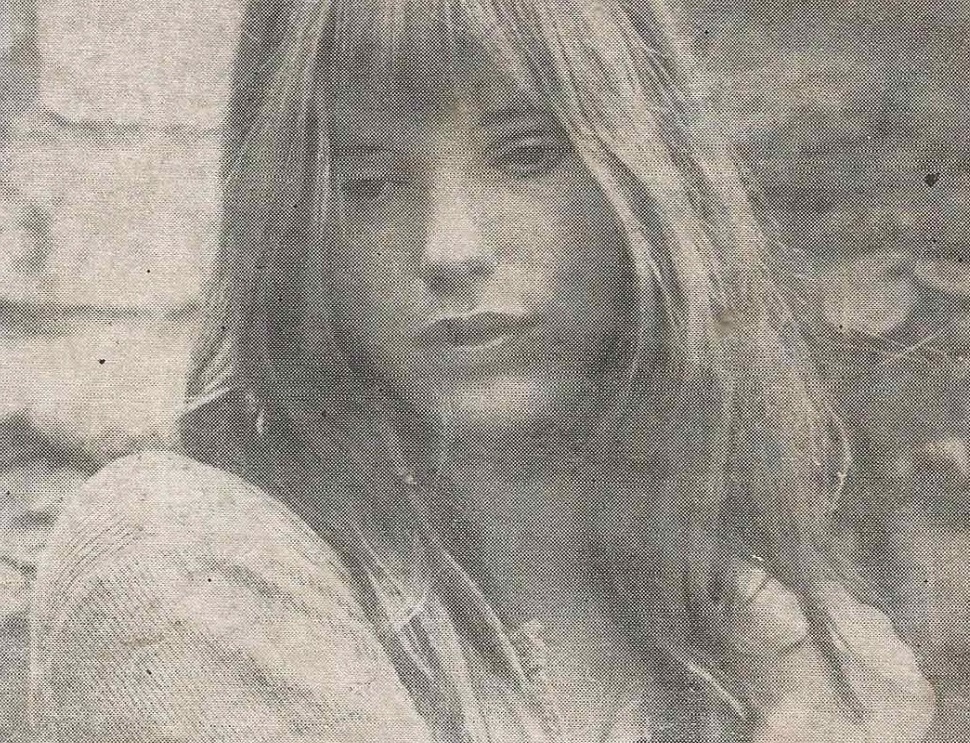Undoubtedly, the iconography of Jane Birkin stands as a remarkable amalgamation of style, social commitment, and independence, leaving an indelible mark on the history of fashion, art, and social activism. Her captivating presence and magnetic charisma have made her an inexhaustible source of inspiration for generations of individuals
Words DOMENICO COSTANTINI
It wasn’t a delay, it was a socio-media experiment. Before writing about Jane Birkin’s death at the age of seventy-six from leukemia, I waited for the necessary time to understand how many fashion experts, colleagues, influencers, social commentators for pleasure and vanity would have titled/compared/given more space to the bag dedicated to her by Jean Louis Hermès, rather than focusing on the discreet actress and the pretty good singer she was. From the mini dresses tailored by Paco Rabanne – which never made more sense than when they exposed her bare legs – to the masculine suits she wore during her last concerts, or the men’s tank tops paired with jeans, and her hair left freely flowing, Birkin embodied the symbol of a style we still recognize as “boho-chic,” and which is entirely unique, as it relies on that specific physique, that culture, and those bones. And, no, she didn’t need designer bags because a simple basket was enough for her. Except for film critics, but even then, I wouldn’t bet on it, hardly anyone could name two movies in which she played a significant role (let me help you: “Blow Up,” Michelangelo Antonioni, mentioned by all but seen by almost no one, where she always appeared naked; “La piscina” by Jacques Deray, later remade by Luca Guadagnino).
Among millennials and baby boomers, there’s a serious risk that few will know that behind the bag, there was, or rather, there is/was, a significant face and name. Jane’s life took flight, and I’ll take full responsibility for this statement, when she met Serge Gainsbourg. Their relationship began during the filming of the movie “Slogan” in 1968 and solidified the following year with the success of the famous “Je T’Aime Moi Non Plus,” which Gainsbourg had originally recorded with Brigitte Bardot. Brigitte, taken aback by the sexual nature of the song, stepped aside for Birkin. From then on, the Gainsbourg-Birkin duo emerged, creating sophisticated and sexy pop music, where they narrated their love stories.
The peak of their artistic and romantic relationship came with the album “Histoire de Melody Nelson” in 1971. The album revolves around Jane’s figure, who appears on the album cover and briefly features in the recordings. Despite her limited presence, the entire album subtly tells her story and became an unparalleled classic of French pop music, despite having only achieved moderate success upon its release.
In the same year, Jane gave birth to their daughter, Charlotte. During the 1970s, their relationship remained central in cultural circles, blending Gainsbourg’s typical need for writing with a lighter form, which allowed them to perform on variety television shows. The peak of this period was twofold. First, in 1976, when Jane starred in Serge’s film “Je t’aime moi non plus,” and in 1978, when he wrote the album “Ex Fan des sixties” for her, a mix of melancholy and glamour, eroticism and musical genre fluidity. At that time, for a few years, Jane’s legend crystallized truly: it became apparent that her accent would never leave her, and her French would always be influenced by that English timbre that gave her both distance and charm. To hear her sing or act meant to get to know her. Fluent between her origins, she was in a state of total grace when embodying characters that seeped into the interstices of life. In the film “Je T’Aime Moi Non Plus,” she portrayed a girl involved in a truck driver’s homosexual love affairs. And when singing “Ex Fan des Sixties,” she connected the vanished ’60s with the modern era.
Her contemporary grace stemmed from this ability to move between worlds, to coexist with contrasts. Perhaps this lack was what Gainsbourg missed after their separation? Something changed in him, artistically, after her. And she never ceased to be by his side in any case. In 1983, he wrote what is probably Jane’s most beautiful album, and, between the lines, Serge’s as well: “Baby Alone in Babylone.” The songs with explicit titles that told their story are heard there: “Fuir le Bonheur Qu’il ne se sauve,” “En rire de peur d’être obligée d’en parler,” but also “Overseas Telegram,” “Les Dessous Chics,” which Gainsbourg would perform in concert shortly before his death, and “Baby Alone In Babylone,” a ballad of such deep melancholy that when Jane sings it, she seems to brush against tears and enduring heartbreak. Grace even in the expression of pain and sadness.
During those years, Jane Birkin was in a relationship with the director Jacques Doillon. Together they had a daughter, Lou. But Gainsbourg was always present in Jane’s life, and she never ceased to magnify Serge’s legacy after his passing in the early ’90s. She continued to sing Serge’s songs while seeking other paths. One of the most powerful and charming paths she undertook dates back to recent years, in 2020, when she recorded the album “Oh Pardon Tu Dormais” with Étienne Daho producing. We hear her, almost testamentary, singing sometimes lightly, and often with a venomous gravity that recalls an English soul (in the track “Ghosts,” a rare excursion of her singing in English) or a spirit more distant from herself, from her age, almost acid and humorous, a tragically immense soul.
Jane Birkin’s legacy is eternal, not only for her artistic talent but also for her social commitment. She demonstrated how celebrity can be a means to raise awareness and positively change others’ lives. Her voice, her compassion, and her dedication continue to inspire and drive others to make a difference in the world. One of the most significant aspects of her commitment was in the fight against HIV/AIDS. Jane became a UNESCO ambassador and dedicated herself to awareness campaigns and fundraising for HIV/AIDS research and prevention. Her involvement helped bring greater attention to this disease and offered support to those affected.
Jane Birkin didn’t stop there. She showed solidarity with refugees and migrants, supporting initiatives to help and protect those forced to leave their homes due to war and persecution. She sought to raise public awareness about the importance of hospitality and integration, showing compassion and humanity towards those fleeing desperate situations. Women were at the heart of her commitment, especially victims of violence. Jane Birkin supported various organizations and campaigns against gender-based violence, working to promote women’s rights and providing help and support to victims. She fought for gender equality and to amplify women’s voices in society. The singer and actress also displayed a profound sensitivity to the environment. She participated in campaigns to raise awareness about climate change and supported initiatives aimed at biodiversity protection. Her voice echoed in the defense of a more sustainable Earth and in promoting eco-friendly practices.
Despite her illness, Jane continued to sing, act, and perform concerts.



